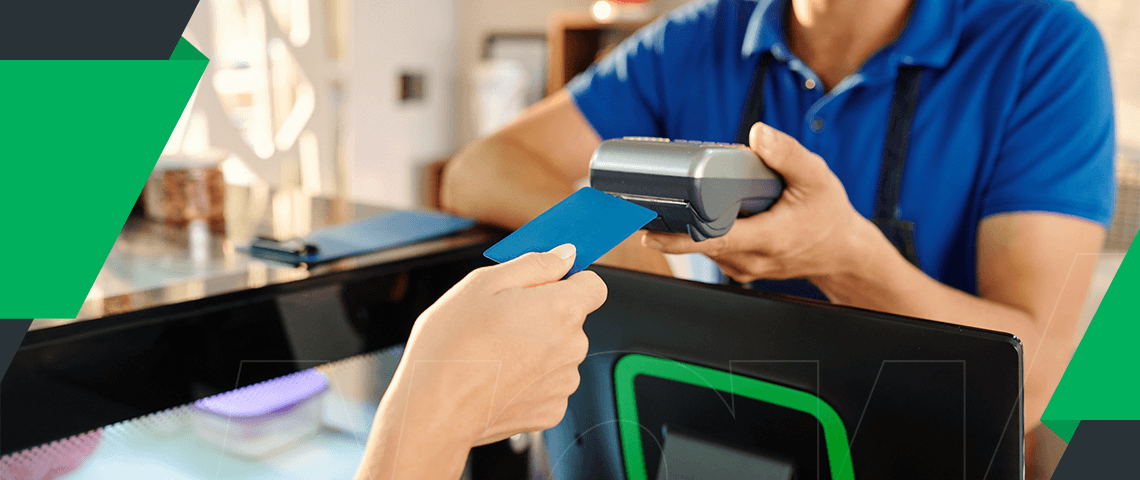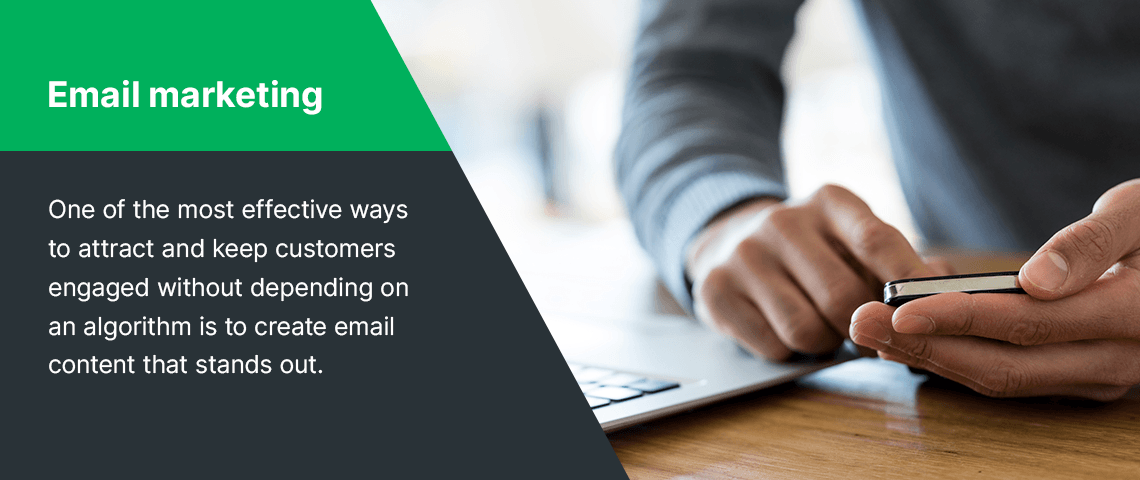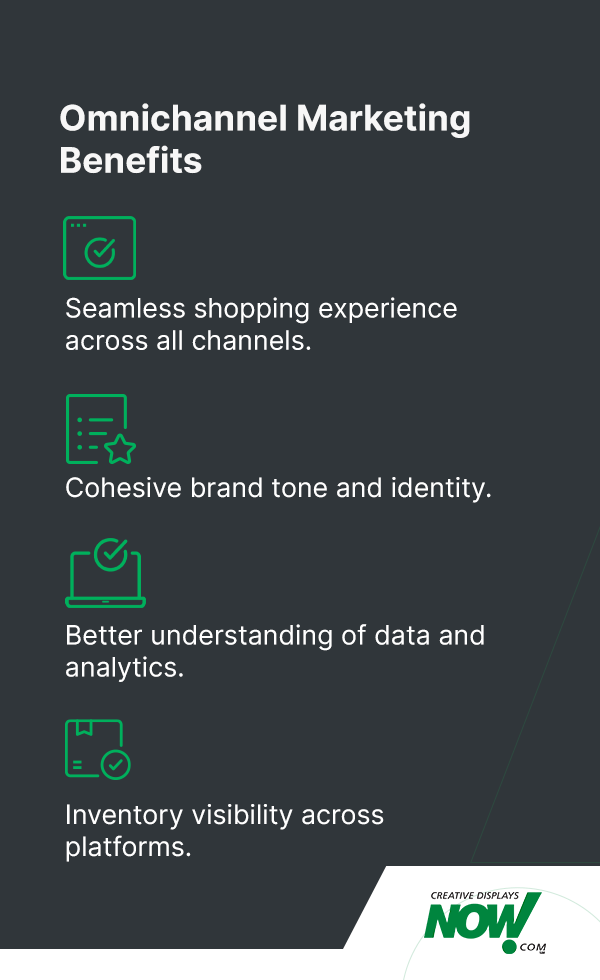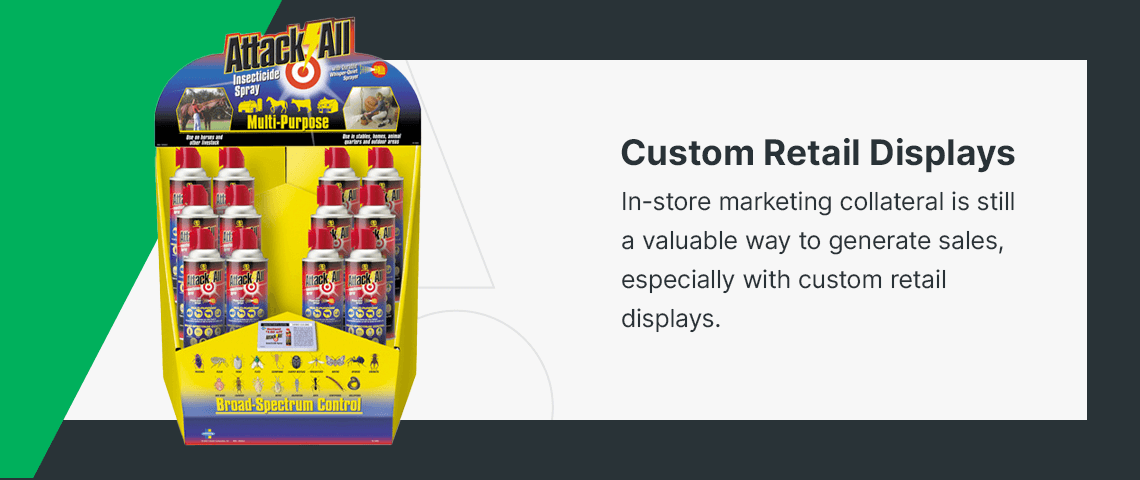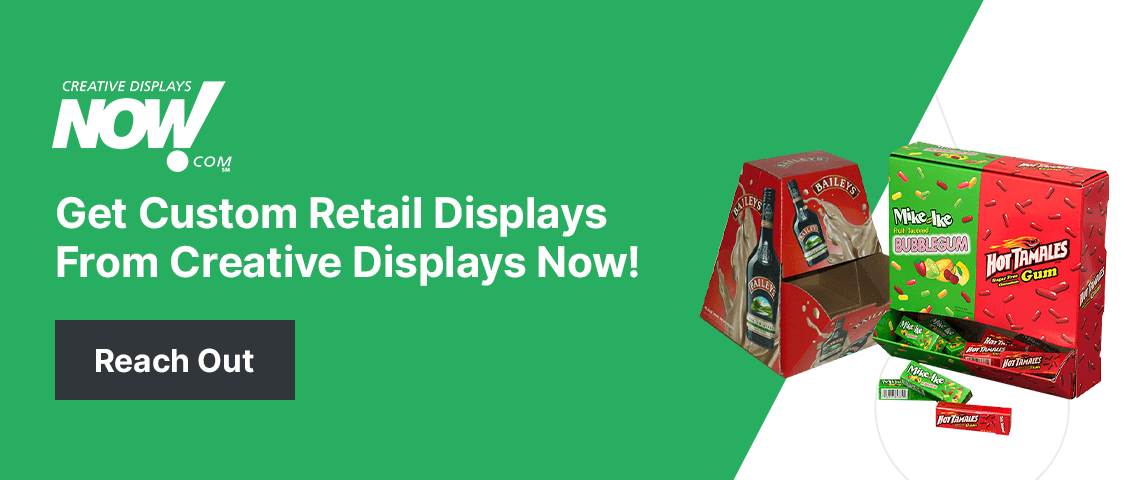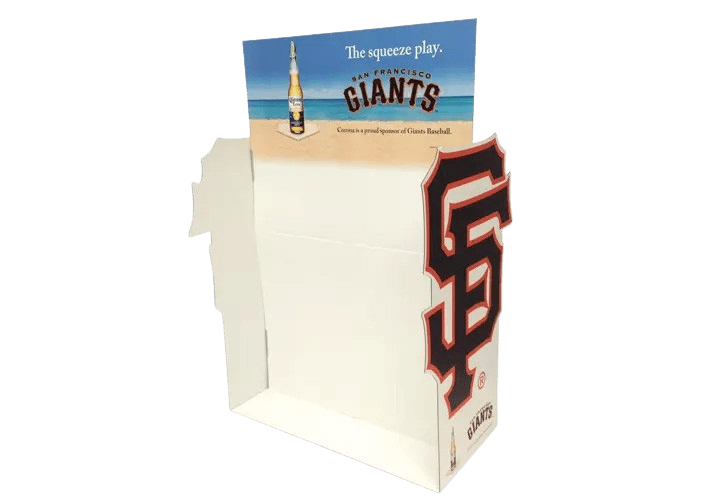Whether you’re an experienced product developer or new to the retail industry, you must know strategies for introducing customers to your products and continuing to grow revenue. Strategic thinkers stand out in a competitive marketplace for their ability to capture attention, drive sales and create lasting brand loyalty that keeps buyers coming back.
What Is Retail Advertising?
Retail marketing, or retail advertising, includes various tactics to spread awareness to your target audience and increase sales — from old favorites to newly launched goods.
There are three primary types of retail marketing.
- In-store marketing: These are the marketing collateral and techniques businesses use to promote their products within a physical environment. Examples include attractive displays, free samples and discounts.
- Traditional marketing: This type of marketing reaches people through offline channels, including newspaper ads, billboard signs, direct mail and radio ads.
- Digital marketing: Online marketing can use organic or paid ads to reach your target audience through multiple online platforms like emails, texts and social media posts.
In most cases, consumer product manufacturers use a combination of online and offline marketing strategies to reach as many customers as possible. Learn how to succeed in retail and make customers happy with your products by following these five retail marketing strategies to drive sales.
1. E-Commerce and Online Presence
If you want to know how to increase sales in retail, using your brand’s online presence and e-commerce platforms is an ideal place to start.
Leverage E-Commerce Platforms
Technology has revolutionized how we buy and sell products. About 30% of online shoppers find what they want in online marketplaces.
If that doesn’t change your mind about using e-commerce platforms, here are other ways these tools can increase your sales opportunities:
- Reach customers who live too far from your product suppliers.
- Allow people to buy your product by clicking a button.
- Engage online with your audience.
- Keep your brand at the front of customers’ minds.
Build a User-Friendly Website
A few decades ago, product developers and advertisers had a limited reach. Today, online marketing has revolutionized everything. With more than 5 billion internet users worldwide, it makes sense that the number of people making purchases online will continue to increase.
No matter what you want your site to look like, implement these web design principles:
- Use mobile-responsive designs for different browsers and devices.
- Display customer reviews or testimonials.
- Add user-friendly navigation, especially to your online store.
- Create a seamless checkout process.
- Optimize product pages with clear descriptions and prices.
- Focus on website responsiveness.
Use Effective Online Advertising and Promotions
When planning a retail marketing strategy that will make sense for your brand, you should consider running occasional promotions and using effective online advertising to target your ideal customers. There are many avenues to promote your products to potential warm leads.
- Email marketing: One of the most effective ways to attract and keep customers engaged without depending on an algorithm is to create email content that stands out. It’s also a great way to market special promotions or send abandoned cart emails to increase the probability of complete transactions.
- Local SEO: If your business has a physical address, you can use local SEO. It increases your online visibility in a specific area, especially for “near-me” Google searches. Set up a Google Business profile and turn people who find you in search results or on Google Maps into new customers.
- Geo-targeted ads: Location-based ads only target people in a specific locality. You can create a business account on any platform you plan to run ads with, whether it’s Google Ads or one of the many social media platforms.
Establish a Social Media Presence
With the growing demand for easy and instant online shopping experiences, many business owners use social media to communicate with their customers and promote their products. Almost 60% of United States shoppers buy products after seeing them on social media. Some businesses even integrate e-commerce with their social media pages so customers can purchase without leaving the platform, which eases the customer journey.
Measure Online Success
You need metrics to figure out how well your online marketing strategies work. These allow you to monitor real-time results, give you a holistic outlook on your overall performance and tell you how well an advertising campaign is doing.
Online tools give you a lot of data to digest. However, you only need to track the following metrics to measure your online success:
- New and returning website traffic
- Average time spent on your website or landing page
- Referral traffic
- Website pages viewed
- Pay per click
- Click-through rate
- Conversion rate
- Bounce rate
You can also use your business analytics tools to see the demographics of your customers and fans.
2. Customer Relationship Management
One of the most valuable retail marketing strategies to drive sales is an often-forgotten factor — managing customer relationships. Your product should be beneficial and of high quality, but the emotional connection to your brand motivates people to purchase those products time after time. No matter which retail marketing campaign you implement, a positive customer experience is a sure way to reflect your brand’s core values and promises.
Here are three steps to improve your relationships with customers.
Build and Maintain Customer Databases
Keep track of all your customers’ information and buying habits in a database. Having all this information on hand will help you:
- Improve customer retention and relationships
- Increase revenue and sales opportunities
- Nurture leads
With landing pages, website forms and surveys, you can paint a clear picture of your ideal customers’ purchase decisions, demographics and individual feedback. This data can also help you distinguish between one-time buyers and loyal fans.
Personalize and Customize
Personalizing the customer experience may be a challenge for larger companies. However, a cookie-cutter feeling could make people feel underappreciated and take their business elsewhere.
You can easily personalize your customers’ experience, from sending them a thank-you letter with every delivery to merging their name into email campaigns so it feels like you’re talking directly to them.
The benefits of personalizing your communication efforts include:
- Building instant rapport
- Humanizing your brand
- Increasing customers’ lifetime value
- Standing out from competitors
Implement Loyalty Programs and Rewards
A loyalty program is one way to impress customers and thank them for returning to buy your products. Using people’s purchase history and data can help you personalize special rewards and promotions and create shopper profiles for targeted marketing campaigns.
Another way to incentivize loyal customers is by introducing referral campaigns. Word-of-mouth marketing is effective because people trust their friends’ and relatives’ opinions.
3. Omnichannel Marketing
As a product developer or retail marketer, you need multiple approaches to reach a broader audience. Investing in several retail marketing channels exposes your brand to more people. For example, a customer can purchase something online and receive a one-time offer notification on a smartphone app a few days later — followed by a personalized email reminder of the exclusive deal.
That’s only one instance of changing brick-and-mortar marketing strategies into click-and-mortar approaches. Omnichannel marketing is a holistic approach that ensures customers have the same consistent experience throughout, no matter how they interact with a brand — unlike multichannel strategies, where every marketing channel works separately.
Furthermore, an omnichannel marketing experience offers the following benefits.
- Seamless shopping experience across all channels: Shoppers can add products they see on their phones to their “favorites” list, complete the checkout process on their desktop and fetch the product at a store. Or, they can complete the whole transaction on one device. The options are endless if all browsers and devices provide a seamless customer experience.
- Cohesive brand tone and identity: With a consistent brand image and messaging, your audience will know who they’re dealing with, no matter what channel or website they visit.
- Better understanding of data and analytics: Instead of analyzing data separately on every platform, an omnichannel approach integrates data from various sources, giving business owners a better understanding of customer behavior.
- Inventory visibility across platforms: Inventory updates run across all channels, giving shoppers a heads-up on stock availability and limiting the frustration of finding it out of stock in-store.
4. Sales and Promotions
Promotions, discounts and early access to new products make customers feel special. They are more likely to shop if it seems like they’re getting a deal. Here are a few ways to implement sales and promotions effectively.
Run Sales Events
Events are excellent for bringing more web traffic to e-commerce pages or social media platforms. Hosting different online sales events can nurture current customer relationships and forge new interests.
- Product launches: These events get customers excited about new products or ranges. You can generate even more buzz by offering incentives or discounts for pre-orders.
- Charitable events: Professional online networking and community events, especially in collaboration with nonprofits and charities, tell people that your brand has invested in making a positive change and giving back.
- Special days and holidays: People tend to spend more money during special holidays and retail campaigns, such as Christmas, Black Friday and Valentine’s Day. Use these events to your advantage for limited-time offers and discounts.
- Gamification: Online events with interactive elements like spin-to-win wheels or lucky draws where customers can win discounts or freebies adds a fun and engaging aspect to a sales event.
Implement Pricing Strategies
Pricing is a crucial component of a retail marketing strategy. It’s a delicate balance between outpricing yourself and making enough profit. You can implement any of the following typical retail pricing strategies depending on what you sell and your market position.
- Keystone pricing: The selling price is double the product cost — a 100% markup.
- Cost-plus pricing: A standard markup percentage added to a product’s cost.
- Competitive pricing: Using competitors’ prices to determine how much to charge for similar products.
- Value-based pricing: Pricing based on a product’s perceived value.
- Promotional pricing: Discounted prices to attract new customers or clear out merchandise.
Leverage Cross-Selling and Upselling Techniques
Some online retailers use artificial intelligence algorithms to determine what products shoppers will probably buy. Most customers visit a site looking for a particular item or deal — they may not browse every product page. That’s where cross-selling and upselling techniques come in.
- Cross-selling is a technique that persuades customers to spend more money by recommending similar or complementary products. These usually pop up under the item you’re viewing as “You might also like,” or “People also bought.”
- Upselling is a different approach that encourages buyers to purchase upgraded or more expensive versions of the items they’re interested in. The costlier items usually come with additional features or benefits.
Provide Limited-Time Offers
Limited-time offers can increase sales when used sparingly and wisely. They can apply to short-term sales, discontinued items or special discounts for loyal customers. You can also use this tactic to thank new customers for buying your products and incentivize them to spend more. Many people perceive scarce products to have a higher value and fear missing out on special editions.
5. Use Custom Retail Displays
Though many people prefer buying online, in-store marketing collateral is still a valuable way to generate sales, especially with custom retail displays. For instance, you can grab in-store customers’ attention and promote your brand with some planning and well-made point-of-purchase displays.
Here are some tips for organizing in-store retail displays and marketing collateral.
- Impulse purchases: Placing POP displays near registers at checkout encourages shoppers to add last-minute impulse buys to their baskets.
- New and seasonal items: Displaying new and trending or seasonal and holiday products close to a store’s entrance will give regular shoppers something exciting to browse and attract new customers.
- Bestselling products: Stock your traffic-driving items at the back of the store so shoppers can view other products as they walk by.
- Cross-promote: Place items people tend to buy together on the same display to increase sales and create a shopping experience for customers.
Get Custom Retail Displays From Creative Displays Now!
Try various retail marketing strategies to learn which ones work best in driving sales for your business. However, with retail trends going through regular changes, you need to be flexible and ready to adapt.
With decades of experience in the display and packaging business, Creative Displays Now understands display specifications and requirements for promoting your products with major retailers.
Our team of structural designers is available to help you with everything from design to distribution — get in touch with us today to learn about our solutions.

